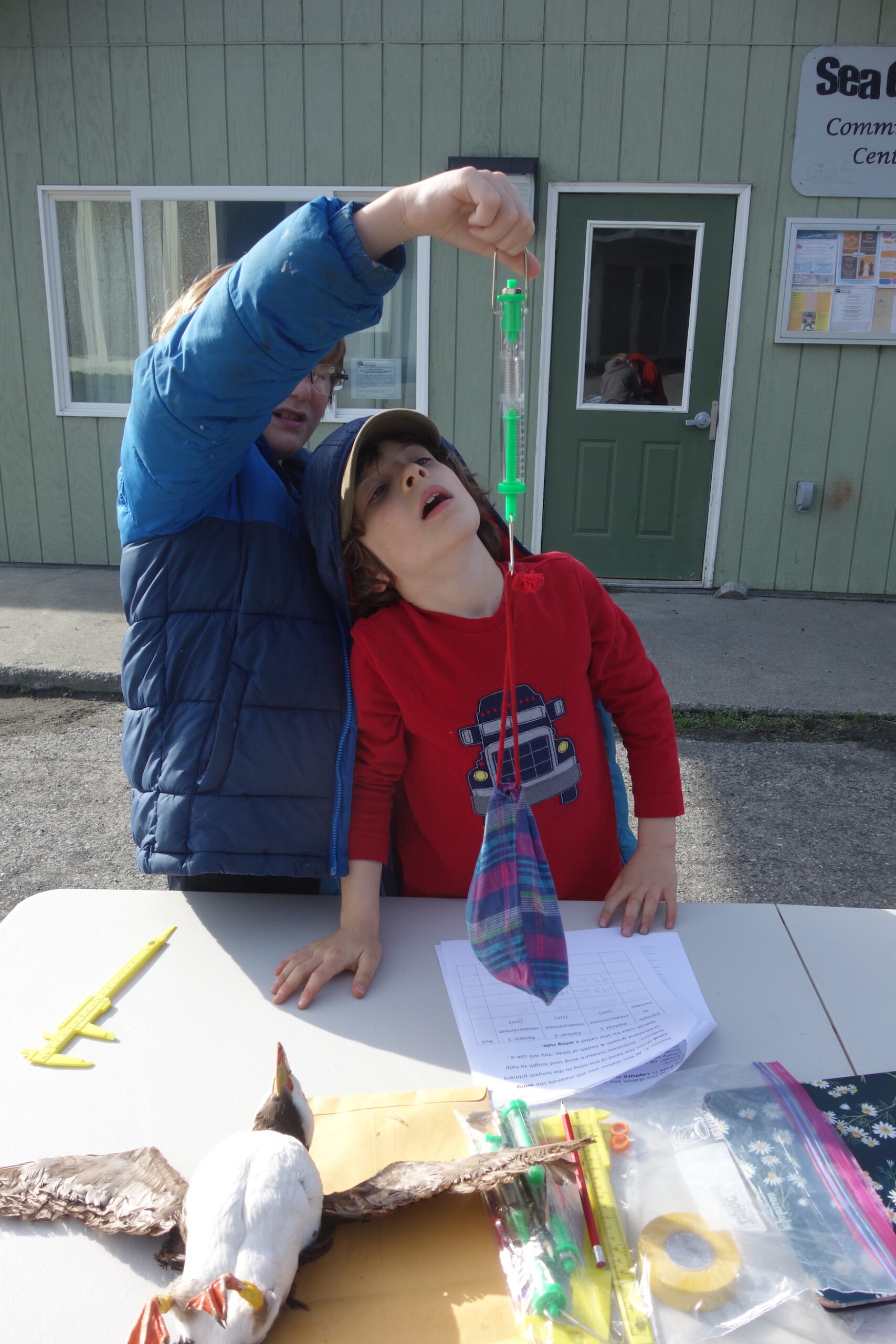Seldovia is a small community located across Kachemak Bay from Homer. Current population size is around three hundred
Ann traveled by water taxi over to Seldovia in October to meet with members of the Seldovia Village Tribe and lead some seabird activities with the kids.
Heading to Seldovia straight after Bering Sea Days on St. Paul Island provided a vivid reminder of just how many contrasting ecosystems and ways of life there are in this vast State. Seldovia’s coast isn’t dominated by the roar of the Bering Sea. The protected waters felt hushed in contrast, and the town is fringed by old wooden board walks, lovely trees in Fall colours and gardens with beautiful vegetables and flowers.
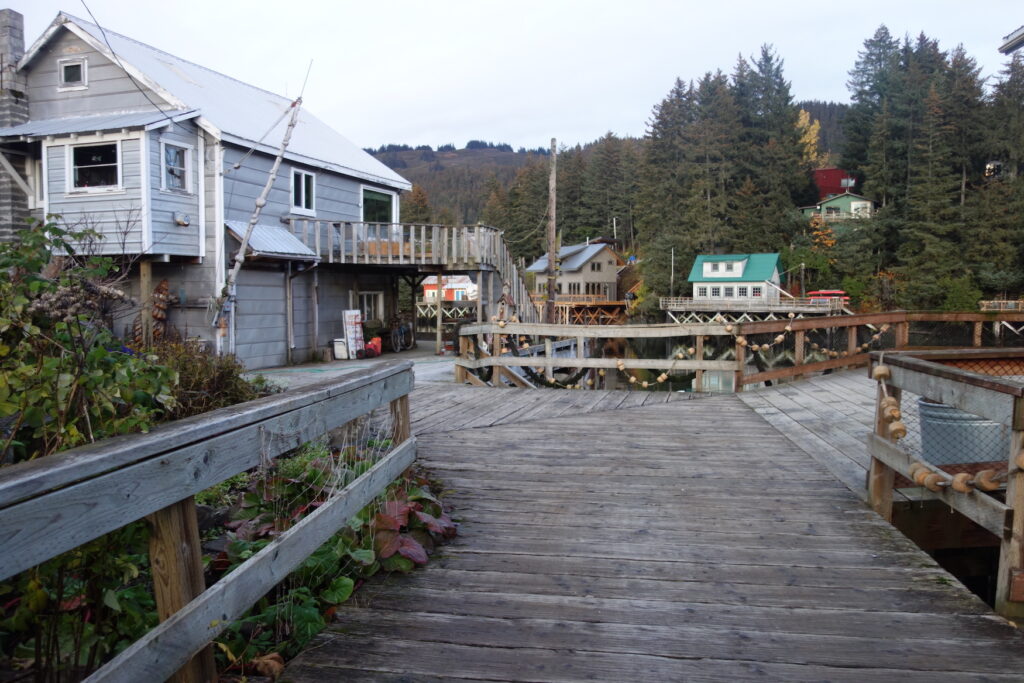
Boardwalks in Seldovia
Seldovia is located close to Gull Island. This important seabird colony is owned by the Seldovia Native Corporation and part of a long-term study on the response of seabirds to local prey availability led by USGS. Approximately 4000 Common Murres and 4000 Black-Legged Kittiwakes breed on Gull Island, and boats from Homer take tourists out to photograph the Tufted and Horned puffins.
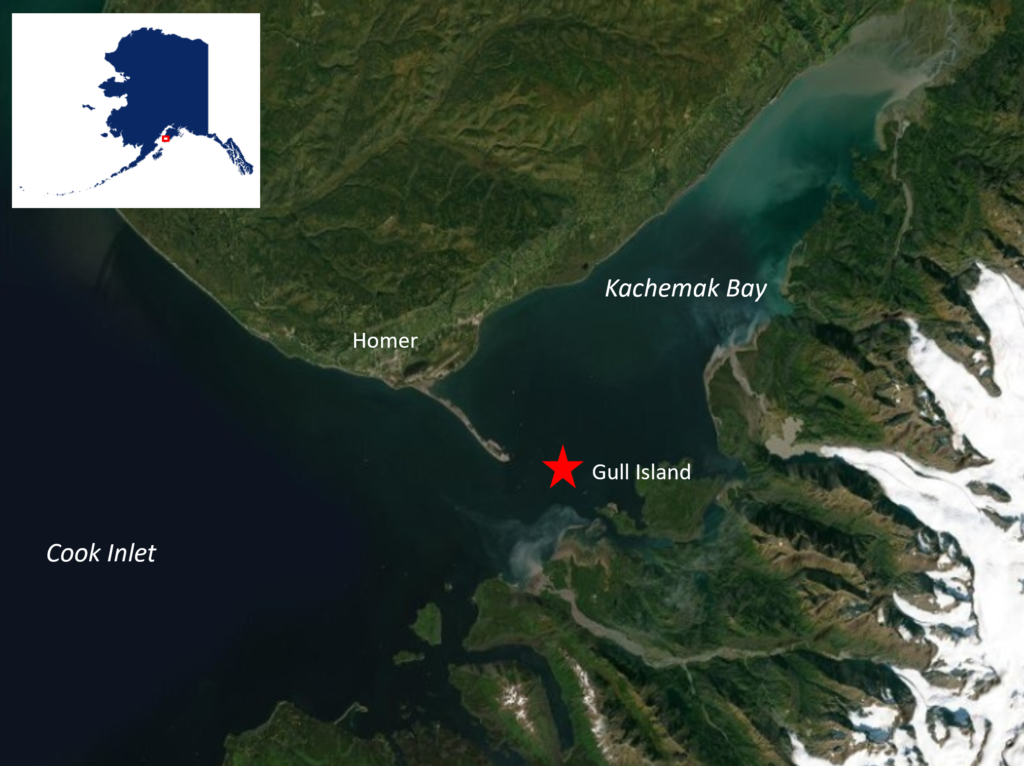
Map showing the location of Gull Island in Kachemak Bay
The Sea Otter Community Center (SOCC) is an important hub in Seldovia, and (in addition to hosting and organizing crafts, sports, after school activities and many other community events) it has become the headquarters of “Science Friday”.
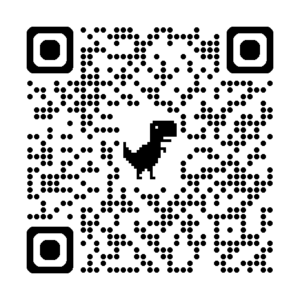 QR code for Science Friday
QR code for Science Friday
Science Friday is an inspiring science program for the large community of home-schooled kids who live in Seldovia. Made possible by the strong collaboration between the Seldovia Village Tribe, SOCC, Kachemak Bay National Estuarine Research Reserve (KBNERR), the Center For Alaskan Coastal Studies (CACS), and the local NOAA lab at Kasitsna Bay, Science Friday provides hands-on science experience with local scientists.
Lisa Stanish organized a full day of seabird activities at SOCC. The middle high school class walked over to the SOCC for a morning session, and the afternoon was packed with the home-school community and then the kids in the after-school group. See details below:
Middle/High School Class:
Middle and High School Students walked over to SOCC for a morning class. Students gave a very clear definition of what a seabird is, and we had a show of hands of who had been to Gull Island. We watched a short presentation on why and how scientists monitor seabirds, and then discussed the USGS-led research project that is seeking to understand how the seabirds breeding on Gull and Duck Island (West Coast of Cook Inlet) respond to local food availability. We looked at some photos from Gull Island, and were intrigued by the camouflage blind tunnels that researchers have set up to study murres without disturbance. We then watched a short video showing researchers on Duck Island color-banding murres to study adult survival, and brainstormed why these data are important. The sun was shining, so we went outside to practice some of the field methods we’d discussed. Students practiced catching a toy bird with a noose pole, and then took morphometric measurements (weight, wing length, bill length and head-bill length) from a stuffed Horned Puffin. We discussed what these data can tell us about both the condition of an individual and local food availability.
Kids from Elementary School
Seabird Activities were similar for both the Home-School kids and the After-School club. We talked about what makes a seabird a seabird, and all the amazing adaptations seabirds have. We then dressed a student up as a puffin, as each adaptation was successfully remembered. The kids had great memories, and the puffin quickly took form! Students especially liked the webbed feet, and the cozy down vest, and they even remembered the salt glands.
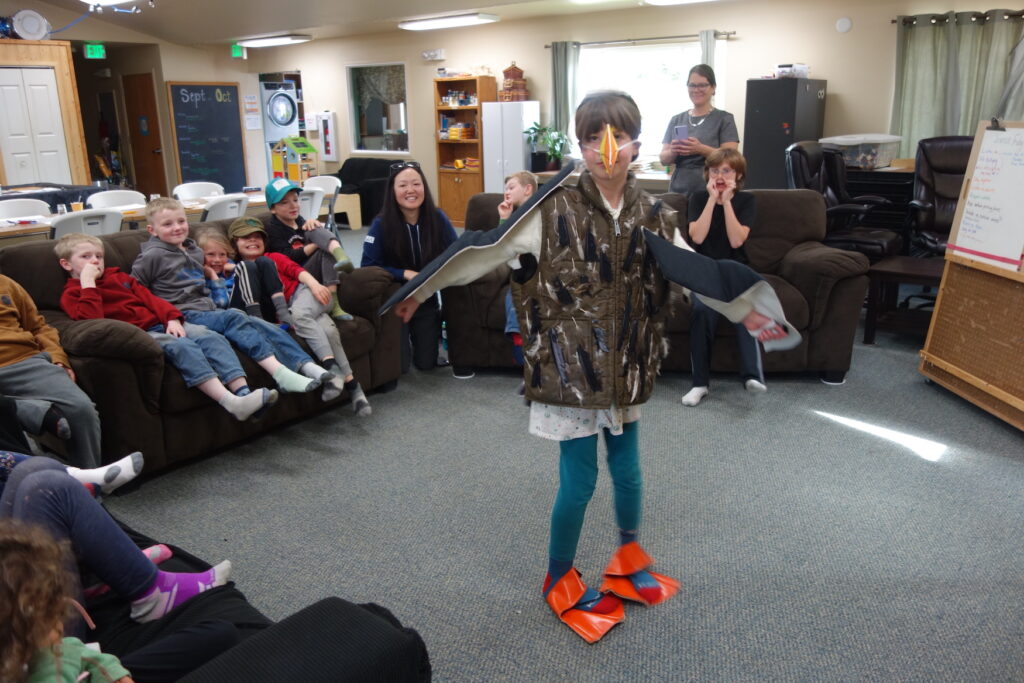
Dressed up as a puffin!
We talked about Gull Island, and had an identification quiz of the most numerous seabirds who breed there. Again, the kids had great memories, and they quickly distinguished between Tufted and Horned Puffins, and even nailed the Glaucous Winged Gull. Impressive.
We split up the group and rotated through two activities. The first group got busy with an art project making a mosaic Horned Puffins out of painted water-color paper, whilst the other half practiced some skills that seabird biologists use in the field.
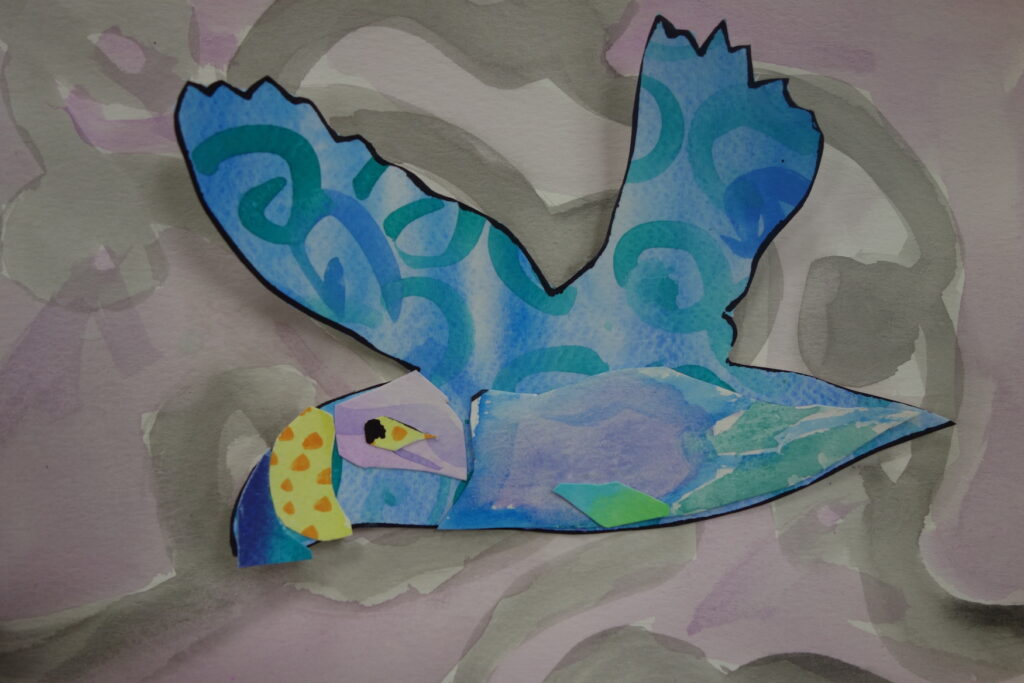
Puffin mosaic art
Students got crafty at creeping up on toy bird and using a noose-pole to gently capture the bird without knocking the ‘egg’ (a small piece of wood) of the cliff, and everyone was very careful weighing and measuring the stuffed puffin. Students were surprised at how small Horned Puffins were. The noose pole, made from a wooden pool cue, worked great!
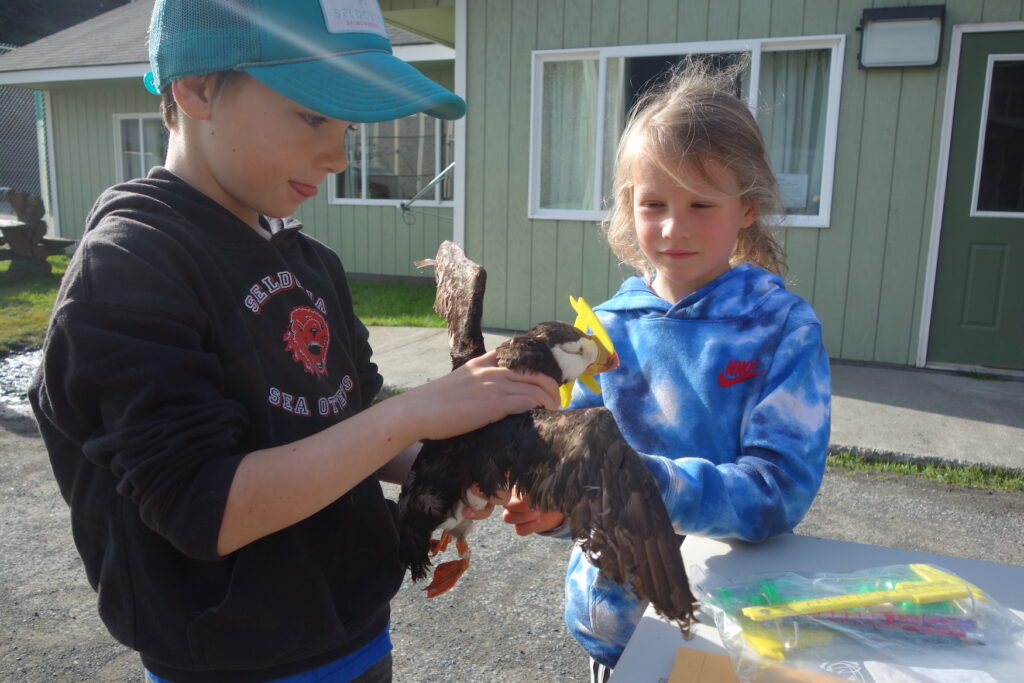
Measuring the bill depth of a stuffed Horned Puffin
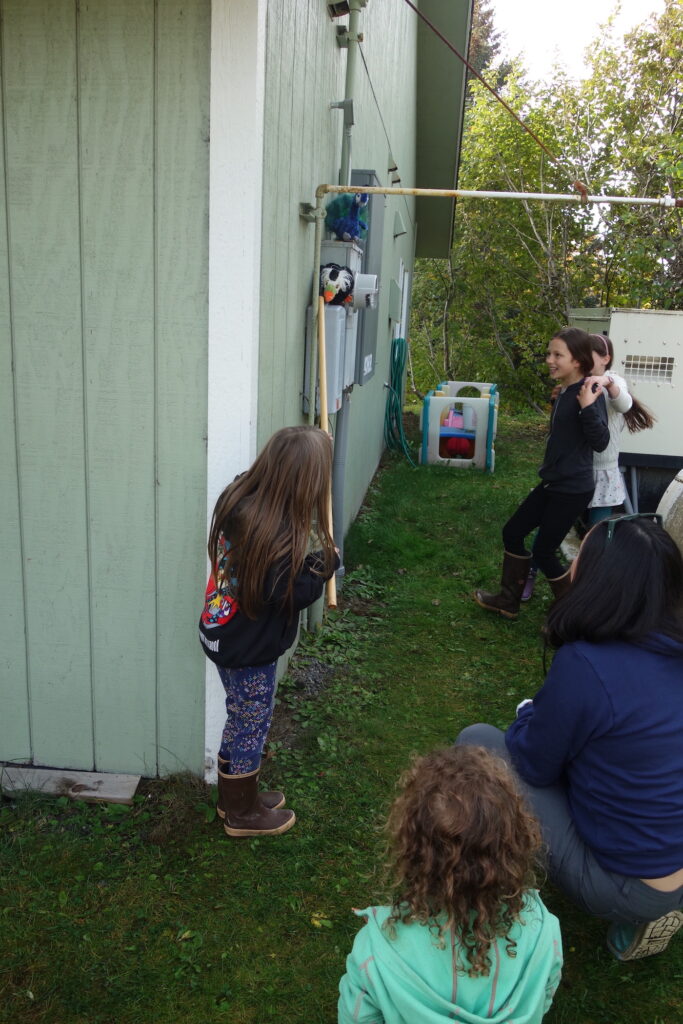
Using a noose pole to capture the toy bird
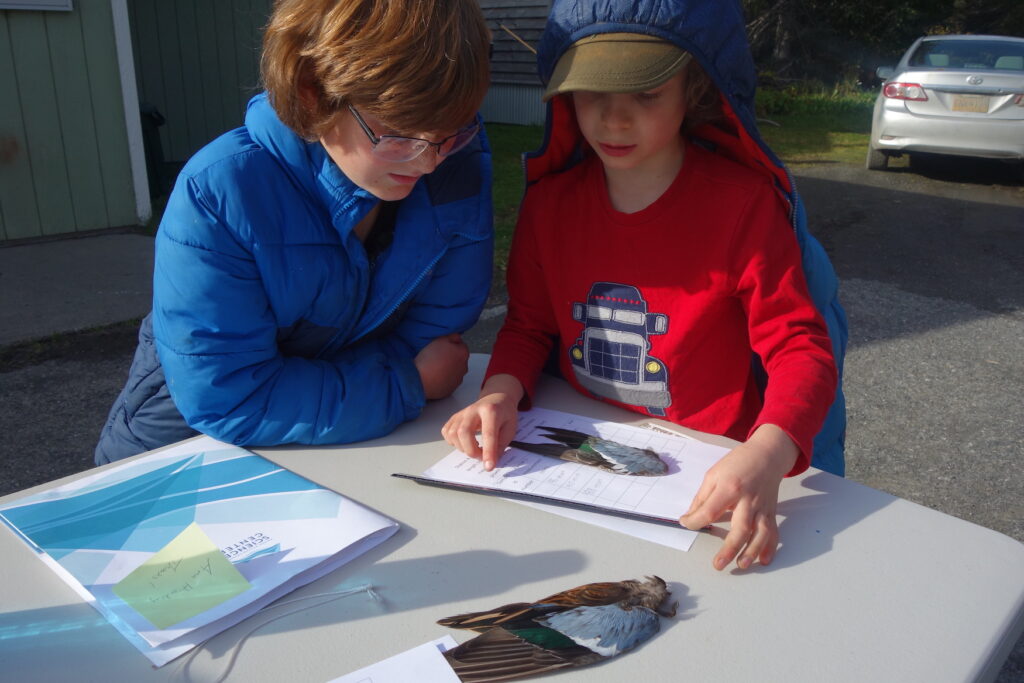
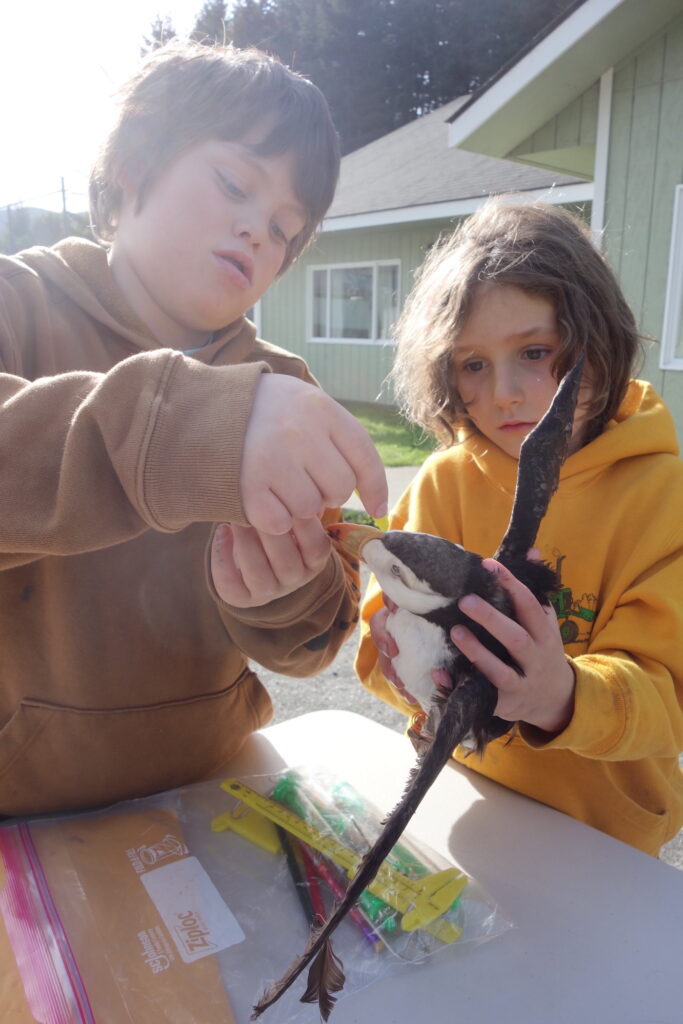
Taking body measurements of a stuffed puffin
Thank you to Lisa Stanish, Stephen Payton, Katrina Hecks, Harmony Payton, and Paul Cziko for the lovely welcome and help with housing and logistics. Thanks to Kendra Bush (USFWS) for loaning the seabird dress-up kit and stuffed puffin, and to USGS for the art supplies.

